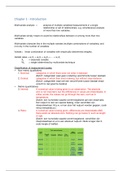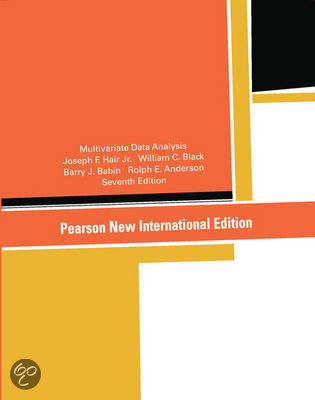Resume
Summary 1ZM31 Multivariate Data Analysis by Hair
- Cours
- Établissement
- Book
Comprehensive summary of the book Multivariate Data Analysis by Hair et al. (2010. It covers chapter 1, 2, 3, 4, 6, 11, 12, and 13, which involve introduction, data analysis, exploratory factor analysis, multiple regression analysis, logistic regression analysis, confirmatory factor analysis, and s...
[Montrer plus]





